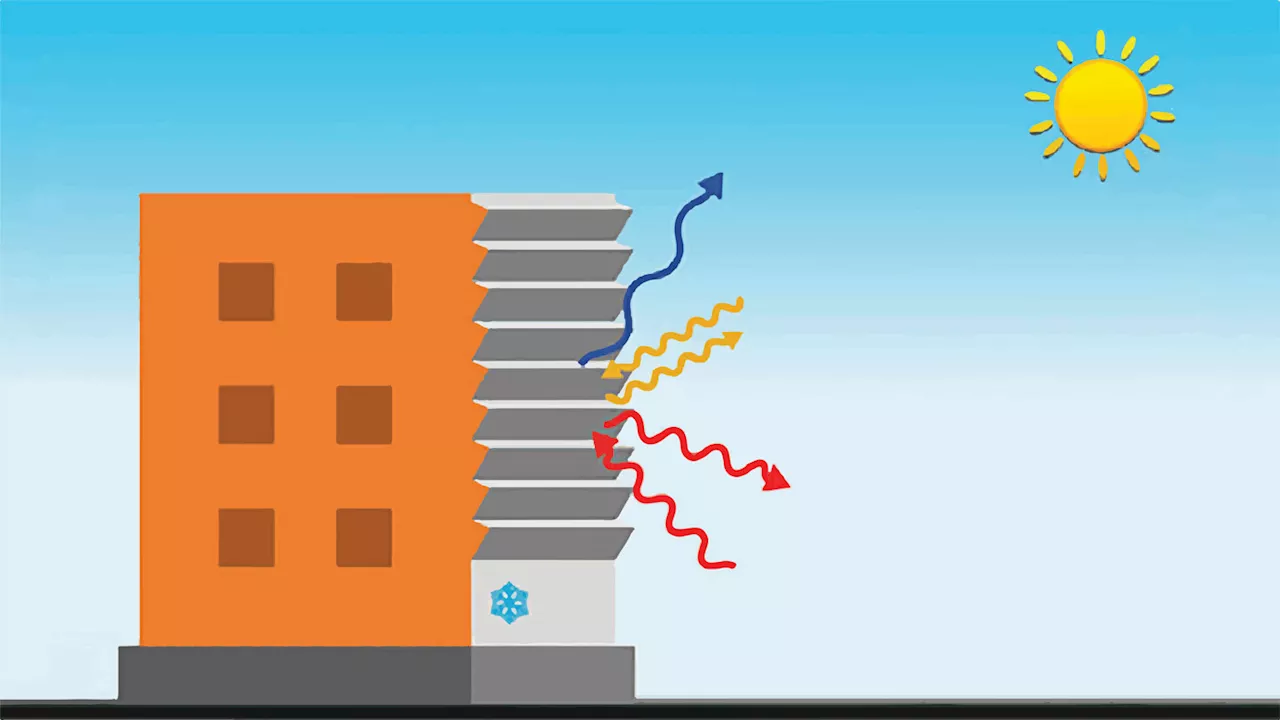A corrugated exterior wall reflects heat to space and absorbs less heat from the ground, keeping it several degrees cooler than a flat wall.
Here’s a twist: Adding zigzags to walls could help cool an overheated building, even as global temperatures rise.
Researchers devised a new, electricity-free design for vertical walls that can cool the building more efficiently than conventional walls. These zigzags, just a few centimeters wide,and account for over a third of global carbon dioxide emissions, a large fraction of which comes from energy-intensive air conditioning . So researchers have hunted for ways to reduce that energy load with designs that can redirect more and more of the sun’s energy.
Most “radiative cooling” designs involve roofs designed to take in and then emit the sun’s energy at infrared wavelengths that radiate through Earth’s atmosphere and into space. Such roofsVertical walls are trickier to cool, says materials scientist Yuan Yang of Columbia University. That’s because they don’t just face out toward space, but simultaneously absorb heat from the ground. An efficient radiative cooling design must account for both effects.
Hence: zigzag walls. Yang’s team hypothesized that by corrugating the vertical surface and coating the facets with different materials — more reflective materials facing downward and more emissive materials facing upward — the wall could absorb less heat than a conventional straight wall. Simulations comparing how much heat conventional and zigzag walls gained from the ground during a hot day supported that hypothesis. The average difference in wall temperature was about 2.3 degrees, a difference that rose to 3.1 degrees during the hottest part of the day. The team found a similar difference when they tested a miniature backyard version of their design in summer 2022 in New Jersey.
United States Latest News, United States Headlines
Similar News:You can also read news stories similar to this one that we have collected from other news sources.
 Severely injured giraffe with 'very twisted' zigzag neck spotted in South AfricaHarry is a U.K.-based senior staff writer at Live Science. He studied marine biology at the University of Exeter before training to become a journalist. He covers a wide range of topics including space exploration, planetary science, space weather, climate change, animal behavior, evolution and paleontology.
Severely injured giraffe with 'very twisted' zigzag neck spotted in South AfricaHarry is a U.K.-based senior staff writer at Live Science. He studied marine biology at the University of Exeter before training to become a journalist. He covers a wide range of topics including space exploration, planetary science, space weather, climate change, animal behavior, evolution and paleontology.
Read more »
 The surprising wall pattern that could keep buildings coolerA zigzag design can maximise how much heat walls radiate into space, while minimising heat absorption from the ground
The surprising wall pattern that could keep buildings coolerA zigzag design can maximise how much heat walls radiate into space, while minimising heat absorption from the ground
Read more »
 Moon robots could build stone walls to protect lunar bases from rocket exhaustKeith Cooper is a freelance science journalist and editor in the United Kingdom, and has a degree in physics and astrophysics from the University of Manchester.
Moon robots could build stone walls to protect lunar bases from rocket exhaustKeith Cooper is a freelance science journalist and editor in the United Kingdom, and has a degree in physics and astrophysics from the University of Manchester.
Read more »
 Robot excavators to build rocket blast shield walls using lunar bouldersA team of researchers has come up with the idea to use autonomous robots like hydraulic excavators to build stone walls on the moon.
Robot excavators to build rocket blast shield walls using lunar bouldersA team of researchers has come up with the idea to use autonomous robots like hydraulic excavators to build stone walls on the moon.
Read more »
 Fungi adapt cell walls to evade antifungal drugsEvery year, life-threatening invasive fungal infections afflict more than 2 million individuals globally. Mortality rates for these infections are high, even when patients receive treatment.
Fungi adapt cell walls to evade antifungal drugsEvery year, life-threatening invasive fungal infections afflict more than 2 million individuals globally. Mortality rates for these infections are high, even when patients receive treatment.
Read more »
 First Baptist approved to try to save walls of historic sanctuaryFirst Baptist Dallas has received approval from the city to attempt to preserve the exterior walls of its secondary chapel after it was severely damaged in a...
First Baptist approved to try to save walls of historic sanctuaryFirst Baptist Dallas has received approval from the city to attempt to preserve the exterior walls of its secondary chapel after it was severely damaged in a...
Read more »
